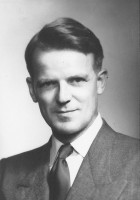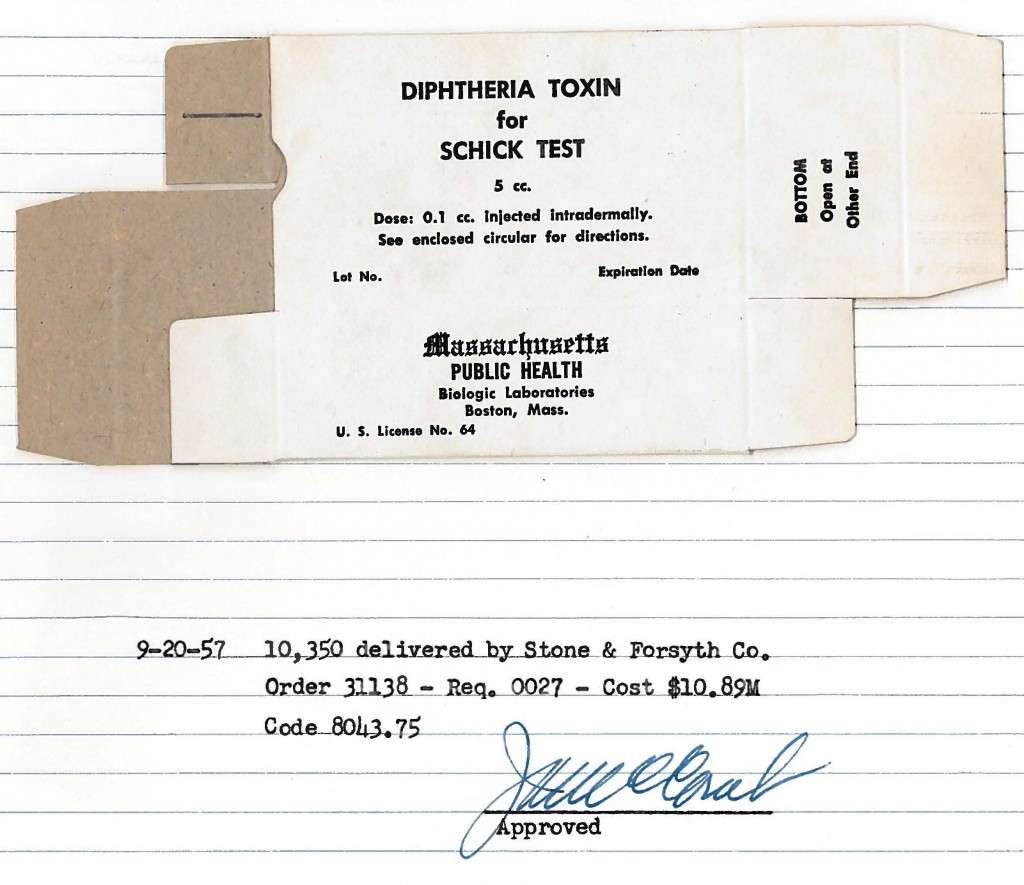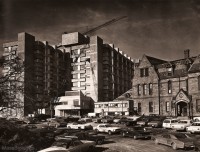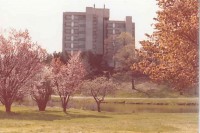Reorganization of the Laboratories – Becoming the Biologic Laboratories
In 1944, the Antitoxin and Vaccine Laboratories were administratively separated from the Diagnostic Laboratory and the Wassermann Laboratory. Funding for the latter two was subsumed organizationally within the Division of Communicable Diseases, even as most of their activities continued to operate on the Bussey Institute grounds at Forest Hills. The process was to be reversed by the 1970’s when the large new State Laboratory Institute Building consolidated laboratory functions within the Department of Public Health, which later also included the Division of Communicable Diseases.38

Superintendent
State Laboratory
Institute
Meanwhile, under the direction of Dr. Geoffrey Edsall, antitoxin and vaccine developments included enhancements to potency and purity of diphtheria and tetanus toxoids, and also involved field studies in the U.S. and internationally about optimizing immunization schedules. When Dr. Edsall left in 1949 to become Professor of Microbiology at Boston University School of Medicine he was succeeded by Assistant Director, James A. McComb, DVM, who served as Acting Director from 1949-1955 and Director from 1955-1967. A major advance in 1949 was the production of vaccine for pertussis (whooping cough). This was in large part due to the skill and commitment of Ms. Leslie Wetterlow, who worked at the Laboratories from the time of her 1930 graduation from Simmons College until her retirement 60 years later. An additional significance of this advance was the discovery that killed pertussis bacteria in the vaccine, when combined with the toxoids of diphtheria and tetanus, boosted the potency of all three components in ” the triple vaccine.” This was especially helpful regarding diphtheria toxoid, the weakest component.39
In 1951, Johannes Ipsen, MD, M.P.H. became Superintendent (i.e. Director) of the newly formed Institute of Laboratories within the Department of Public Health. Under this organization, the Division of Biologic Laboratories consisted of two parts. The first, the Antitoxin and Vaccine Laboratories, was responsible for manufacturing and distributing a variety of biologic products to Boards of Health and physicians throughout Massachusetts. The second was the Blood Laboratory, responsible for manufacturing and distributing human albumin and human serum globulin for Massachusetts under a contract with the American Red Cross. Federal License No. 64, first issued in 1917, was formally reissued to the Biologic Laboratories as “The Massachusetts Public Health Biologic Laboratories.” All functions under the Division of Biologic Laboratories, including the Antitoxin and Vaccine Laboratories, were henceforth known as the Massachusetts Public Health Biologic Laboratories or, simply, the Biologic Laboratories.40

Schick Test Tuck
[individual product boxes].
Package design and
order approval by
James McComb.
September 20, 1957
Dr. Ipsen, via his academic affiliation with the Harvard School of Public Health, inaugurated a graduate course entitled Advanced Laboratory Work in Applied Immunology in 1951. In the course, each student chose a portion of the work done at the laboratory, such as antitoxin production, became familiar with it, and then explained the method to the rest of the class at group conferences. The Laboratories also maintained close relationships with many other local teaching and research institutions, with cooperative investigations being carried out throughout its existence. During this time, the Laboratories received visitors from many countries who came for training in some aspect of biologics production.
Planning for New Facilities
In 1960, Dr. Geoffrey Edsall returned from Walter Reed Army Institute of Research where he had spent nearly a decade as Chief of Immunology. In succeeding Dr. Ipsen as Superintendent (Director) of the State Laboratory Institute, he oversaw the planning of a large facility to be built on the grounds of the Bussey Institute. It was intended to provide support services for the [Division of] Biologic Laboratories, and would include a new Diagnostic Laboratories unit, as well as the Newborn Screening program and its laboratories, other laboratories for food and drug analyses and environmental testing, and laboratory training programs. It also was to contain a state-of-the-art auditorium and meeting rooms for scientific meetings and education programs.

and Bussey Building. 1972.
Separate from the meeting rooms, the tower wings containing working laboratory space were designed to have ultra-safe single-pass air filtration to control risks that infectious agents could contaminate workers or escape into the environment. There were many cold rooms and freezers for preserving specimens. The design, unfortunately, did not anticipate future prohibitive energy costs, a major factor that left little budgetary flexibility for support of research and development.

1970s.
The 10-acre site, which already included the stables and older buildings of the Biologic Laboratories, was purchased by the State from the Harvard University Corporation by an Eminent Domain process. A house that once had been occupied by Dr. Theobald Smith remained on the site until it was burned by vandals. Groundbreaking for the new facility occurred in 1969; when construction problems were finally adjudicated by 1974, the Bussey Institute building was demolished and the Harvard University stone emblem was salvaged for display in the lobby of the new building.